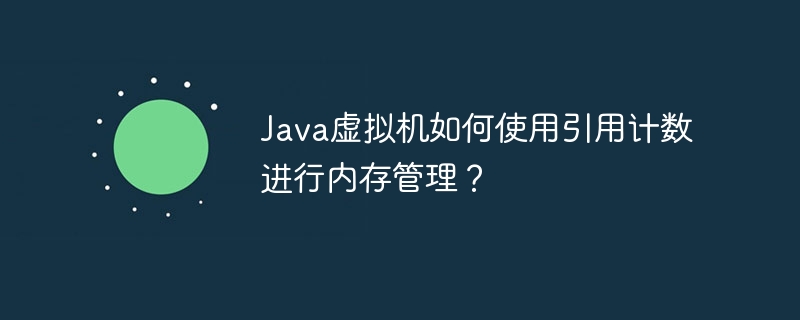
The Java virtual machine uses reference counting to manage memory usage. When the object's reference count reaches 0, the JVM will perform garbage collection. The reference counting mechanism includes: each object has a counter that stores the number of references pointing to the object. When an object is created, the reference counter is set to 1. When an object is referenced, the reference counter is incremented. When the reference ends, the reference counter is decremented.

Memory management of reference counting in Java virtual machine
Introduction
Java The virtual machine (JVM) uses reference counting to track the memory usage of objects. When an object's reference count reaches 0, the JVM will garbage collect it.
The principle of reference counting
Each Java object has a 32-bit reference counter, which stores the number of references pointing to the object. When an object is created, its reference counter is set to 1. When an object is referenced, its reference counter is incremented. When a reference ends, the reference counter is decremented.
Practical case
The following code example demonstrates how the Java virtual machine uses reference counting for memory management:
public class ReferenceCountingExample { public static void main(String[] args) { // 创建两个对象,并增加它们的引用计数 Object object1 = new Object(); Object object2 = new Object(); object1 = null; // 结束object1的引用 // JVM 会垃圾回收object1,因为它的引用计数为0 // 创建一个对object2的强引用 Object strongReference = object2; // 创建一个对object2的弱引用 WeakReference
In this code:
object1was garbage collected because it had no more references.object2was not initially garbage collected because it had a strong reference pointing to it.object2is released because it now only has a weak reference.Advantages
Disadvantages
The above is the detailed content of How does the Java virtual machine use reference counting for memory management?. For more information, please follow other related articles on the PHP Chinese website!
 The difference between scilab and matlab
The difference between scilab and matlab propertydescriptor usage
propertydescriptor usage pycharm open new file method
pycharm open new file method setinterval usage
setinterval usage Characteristics of management information systems
Characteristics of management information systems Introduction to the meaning of += in C language
Introduction to the meaning of += in C language How to turn off real-time protection in Windows Security Center
How to turn off real-time protection in Windows Security Center How to solve the problem of access denied when booting up Windows 10
How to solve the problem of access denied when booting up Windows 10



